I usually walk home from work in the dark, somewhere at around 6 pm. One night last week, at the crest of the hill into the valley clearing that’s midway home, I could hear people shouting. As I drew close, the shouts turned to laughter and military style grunting.
I was not unnerved. I could see about a dozen, maybe two dozen people, all in many layers of lycra and fleece, bundled up against the cold. Their mostly black forms stood out even in the dark against the snowy field.
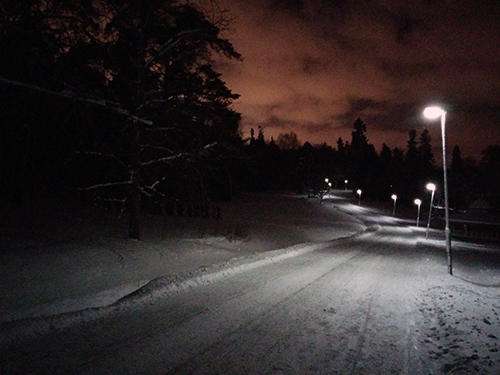
Look just under the tree to the left for the line of people…
As I approached and then passed the group, I watched as they formed two lines and got down on all fours. They bent down to form arches with their bodies, a living tunnel, that one person from the end of the line then had to crawl through. And then the another, and another. I could hear squeals and some laughter, probably when the crawler hit something sensitive, and now and again I could see someone pop up to jump around and warm up.
They had been basically rolling around in the snow in exercise clothing on an evening that was below freezing. That’s crazy.
But hey, they were outside, getting exercise in the middle of winter. I’m sure I’ve written about this before: in Sweden you have to go outside no matter what, in the dark, in the sun, you have to get exercise, in the snow, in the rain.
But this bootcamp thing — it puzzles me. This evening happened to be a week or so after the new year, so I imagined some of those people had made resolutions to be as fit as they possibly could be.
But military fit?
We live in a fairly sedentary society; many of us sit in front of our computers at desks all day long, or on the Metro or on the bus and peer into our phones. We don’t need to work that hard too survive, physically. Most of us are not laborers, or farmers trying to feed ourselves, or hunters looking for our winter meals.
But what if we need to be in shape like that someday? What if, in light of the political state of the world right now, we need to be able to walk kilometers every day, lift heavy objects, fight back somehow? That sounds like Margaret Atwood, like speculative fiction. Some of the most successful movies right now, say The Hunger Games, seem to unfold in a dystopian world as a seemingly regular person transforms into a self-sufficient fighting machine.
Whoa, what a fantasy! Apocalypse! Boot camp class from the local gym, just in case there’s World War Z! Are those folks totally freaked out about the current state of the planet? Or trying to get six-pack abs to post photos on a dating site? Or heeding some other primitive call, to be an active animal?
I am going to go for something more in the middle. It’s good to get outside in the winter in Sweden, no matter what you do!


 The sorting happened last weekend, and the dropping off on Saturday. Today, Sunday, I headed back to Myrorna in search of a side table. Matt’s been putting his beer glasses on the floor next to his chair, and I am prone to tipping them over. So a small table seemed like just the thing. Yet nothing in the cavernous cellar at the Ropsten Myrorna quite fit. The one side table that was closest to desirable had two drawers and a great aspect ratio — and cracked wood on the face of the drawers and water stains from glasses on its tabletop, all for 400 SEK (more than 50 bucks!).
The sorting happened last weekend, and the dropping off on Saturday. Today, Sunday, I headed back to Myrorna in search of a side table. Matt’s been putting his beer glasses on the floor next to his chair, and I am prone to tipping them over. So a small table seemed like just the thing. Yet nothing in the cavernous cellar at the Ropsten Myrorna quite fit. The one side table that was closest to desirable had two drawers and a great aspect ratio — and cracked wood on the face of the drawers and water stains from glasses on its tabletop, all for 400 SEK (more than 50 bucks!). I walked down the side of the Hjörthagen mountain and made my way to the two small container huts, where people were busy packing up. They too had closed at 4 pm. Still, I stopped to watch as they were packing up these cleverly designed shipping containers, with foldable awnings and shelving built in to the walls. I also noticed a few of the people were wearing vests emblazoned with Stockholm Vatten, the city’s water treatment utility. That was confusing. I grabbed a guy named Peter Nygren (I may be getting his name wrong) to ask what was happening.
I walked down the side of the Hjörthagen mountain and made my way to the two small container huts, where people were busy packing up. They too had closed at 4 pm. Still, I stopped to watch as they were packing up these cleverly designed shipping containers, with foldable awnings and shelving built in to the walls. I also noticed a few of the people were wearing vests emblazoned with Stockholm Vatten, the city’s water treatment utility. That was confusing. I grabbed a guy named Peter Nygren (I may be getting his name wrong) to ask what was happening.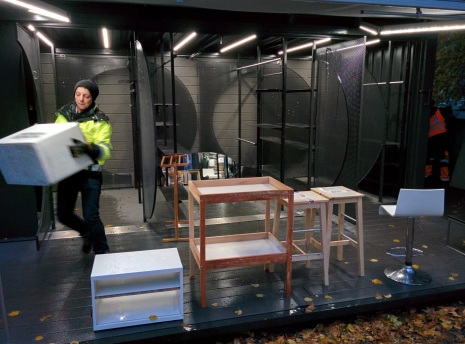
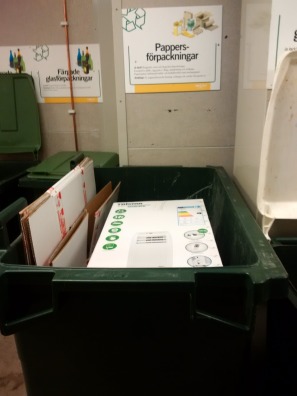





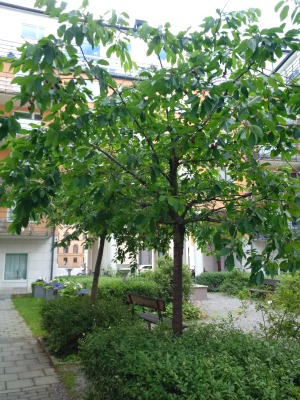




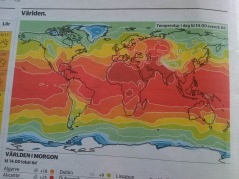 I also have to wonder: this year is the
I also have to wonder: this year is the  as climate changes, the color codes for highs and lows in Sweden might have to shift too.
as climate changes, the color codes for highs and lows in Sweden might have to shift too.
